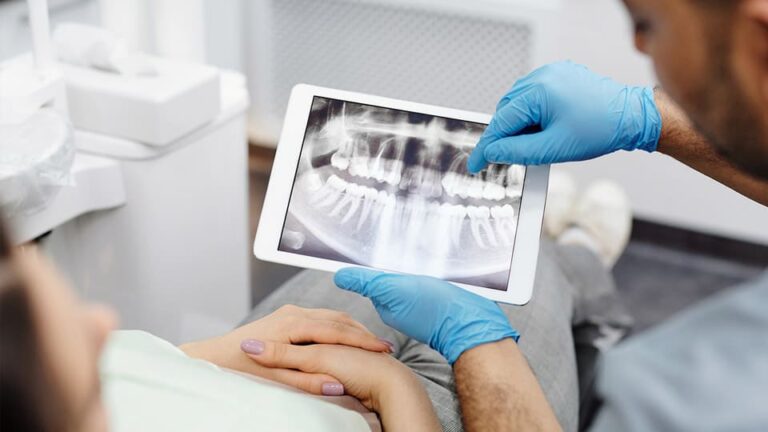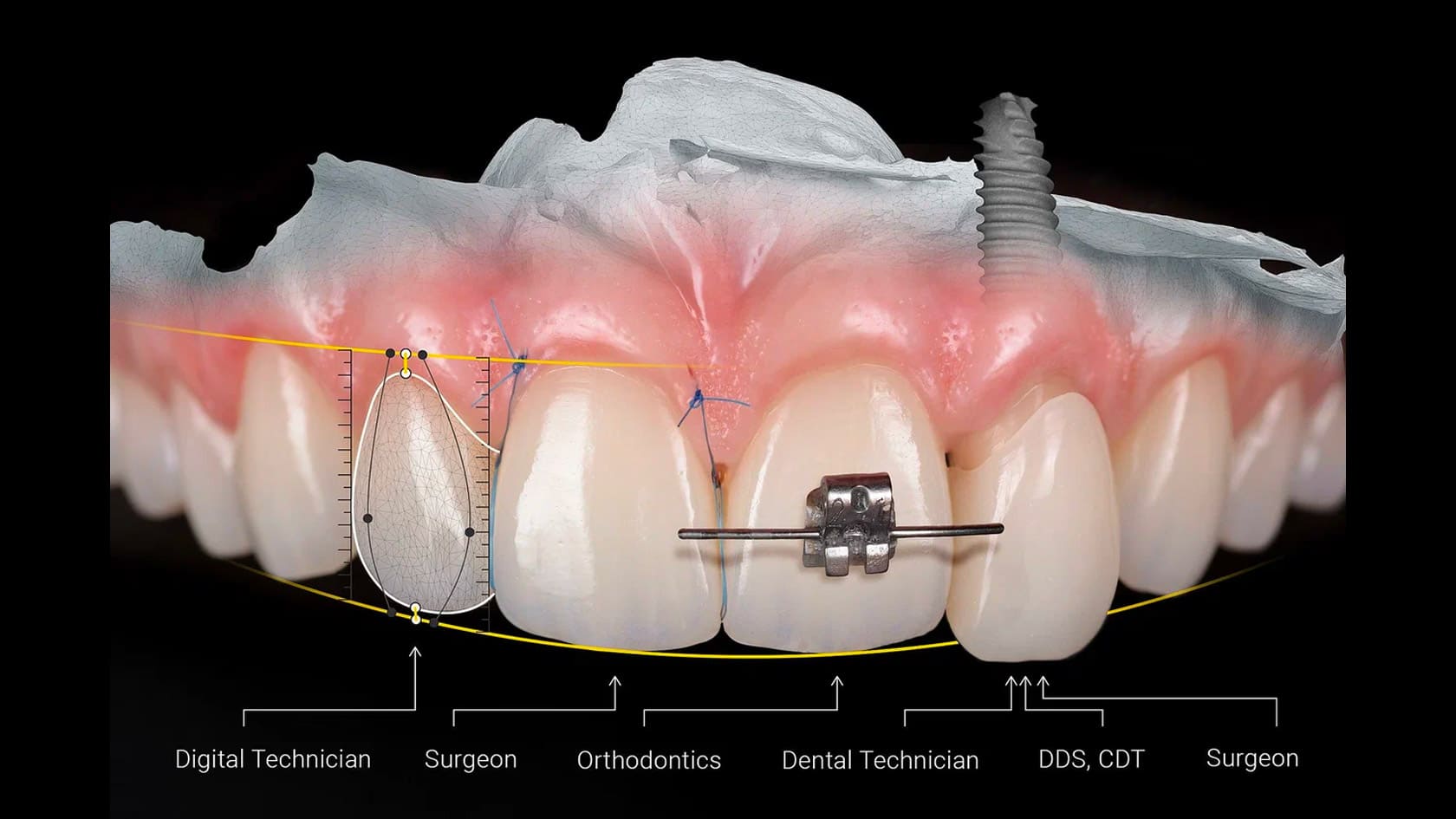What is Smile Design?
Smile design is a branch of dentistry called dental aesthetics. Smile design aims to improve the shape, size, color, and overall appearance of a person’s teeth to achieve a more beautiful smile.
During this process, factors such as the color, shape, and size of the teeth are taken into consideration and the dentist determines the ideal smile design by also taking into account the person’s face shape, skin tone, lip shape, and other factors. Smile design may involve various dental treatments such as correcting, whitening, reshaping, and reconstructing teeth. This procedure is usually applied when a person wants to increase their self-confidence and achieve a younger, healthier, and more beautiful appearance.
Table of Contents
What procedures
are included in smile design?
Smile design usually involves a series of cosmetic dental procedures that can help a person achieve a more aesthetic smile by making their teeth straighter, whiter, and more symmetrical.
Some common smile design procedures may include the following:
Teeth whitening: A procedure used to whiten the color of teeth. The dentist can use a professional whitening agent to lighten the color of the teeth.
Tooth veneer: An thin, specially prepared porcelain coating that is attached to the teeth to improve their appearance. This procedure can be used to treat decay, discoloration, and other cosmetic issues.
Dental filling: It is used to treat cavities in teeth. Fillings can make the shape and color of the tooth look natural.
Orthodontic treatment using braces: It is used to align and straighten teeth. In addition to traditional metal braces, clear, fixed, or removable braces are also available.
Dental implants: Artificial tooth roots that are placed in the jawbone to replace missing teeth. Implants can provide an aesthetic appearance by filling the gaps of missing teeth, preserving the jawbone, and preventing problems such as shifting of natural teeth.

How is Smile Design done?
Smile design process generally includes the following steps:
Tooth Analysis: The dentist evaluates factors such as the shape, size, color tone, symmetry, and overall appearance of the person’s teeth. This analysis is used in determining the smile design plan.
Smile Design Planning: Based on the tooth analysis, the dentist determines the ideal smile design. At this stage, the person’s facial shape, skin tone, lip shape, and expectations are also taken into consideration. The smile design plan is personalized through discussion between the dentist and the person.
Application: The smile design process is implemented in accordance with the determined plan. Depending on the person’s needs and goals, the process may involve different dental aesthetic procedures such as teeth whitening, dental veneers, dental fillings, dental implants, and braces.
Monitoring and Maintenance: After the procedure is completed, the dentist provides the person with maintenance recommendations to maintain their new smile. These recommendations may include advice on regular dental cleaning, brushing, flossing, and oral hygiene. In addition, regular dental check-ups are important to maintain the person’s new smile. Smile design can enhance a person’s confidence and help them achieve a younger, healthier, and more aesthetic appearance by improving the appearance of their teeth.
Smile design usually involves the following processes?
Smile design usually involves the following processes:

1- Dental Analysis: The dentist evaluates factors such as the shape, size, color tone, symmetry, and overall appearance of the person’s teeth.
2- Smile Design Planning: Based on the dental analysis, the dentist determines the ideal smile design. At this stage, the person’s face shape, skin tone, lip shape, and expectations are also taken into consideration.
3- Temporary Restorations: After the smile design planning is completed, the dentist simulates the person’s new smile using temporary restorations.
4- Tooth Preparation: The dentist performs the necessary procedures to prepare the person’s teeth. These procedures may include reducing, shaping, or removing teeth.

5- Restoration Production: The dentist makes restorations according to the determined plan. At this stage, different dental aesthetic procedures such as teeth whitening, dental veneers, dental filling, dental implants, and braces can be applied.
6- Control and Maintenance: After the procedure is completed, the dentist provides the person with maintenance recommendations to protect their new smile. These recommendations may include advice on regular teeth cleaning, tooth brushing, flossing, and oral hygiene. In addition, regular dental check-ups are important to maintain the new smile. Smile design can improve a person’s self-confidence by enhancing the appearance of their teeth and help them achieve a younger, healthier, and more aesthetic look.

What is the difference between smile design and digital smile design?
Smile design and digital smile design are two different methods used in cosmetic dentistry treatments.
Smile design is a treatment approach in which a dentist creates a customized treatment plan by taking into account various factors, such as their clinical experience, dental structure, and other relevant factors. During this treatment, the dentist determines the appropriate shape, size, color, and position of teeth based on the patient’s face shape, lip structure, and skin tone.
On the other hand, digital smile design is a treatment planning method that involves using computer technology. The dentist examines intraoral images of the patient and uses digital smile design software to analyze their current dental structure and create a customized smile design. Once the patient and dentist approve the digital design, it is sent to the laboratory for use in the actual treatment stage.
Compared to the smile design method, digital smile design offers faster and more accurate results.
With this approach, patients can examine the digitally created smile design and gain a better understanding of the expected outcome. However, since special equipment and software are necessary for digital smile design, the cost may be higher than that of smile design.
To summarize, smile design and digital smile design are two different methods used in cosmetic dentistry, both of which aim to create a personalized treatment plan for the patient. However, digital smile design enables faster and more accurate results by utilizing computer technology.

Smile Design Price
The price of smile design can vary depending on the person’s needs, treatment plan, selected treatment methods, and the agreement made with the dentist.
Smile design treatment is generally more comprehensive and personalized compared to other dental cosmetic treatments, and therefore, the prices are usually higher.
Factors that can affect the price of smile design treatment include the dentist’s experience, the quality of materials used, technological capabilities of the clinic, and the applied treatment methods. Additionally, other procedures that may be required for smile design treatment, such as tooth extraction, root canal treatment, or implants, can also affect the price.
It is difficult to give an exact figure for the price of smile design because a personalized treatment plan needs to be created for each individual, and the prices are determined after an initial examination and treatment plan are established. Therefore, you can contact your dentist directly to obtain information about the price of smile design treatment.
Frequently Asked Questions About Smile Design
The smile design procedure is generally painless. However, the dentist may use local anesthesia during the procedure. After the procedure, there may be some mild pain and sensitivity, but this is usually temporary.
The smile design procedure can vary depending on the person’s needs and goals. The procedure can take a few hours or a few weeks.
The smile design procedure can be applied to almost anyone who has cosmetic dental issues. However, the dentist should evaluate the person’s dental condition and determine if they are suitable for the procedure.
The cost of a smile design procedure can vary depending on the methods used in the procedure and the individual’s needs and goals. The cost can be determined after a consultation with a dentist.
The smile design process is long-lasting, but due to the natural structure of teeth and aging, it may need to be renewed over time. If regular dental check-ups and maintenance recommendations are followed after the procedure, the results can be preserved for a longer period of time.